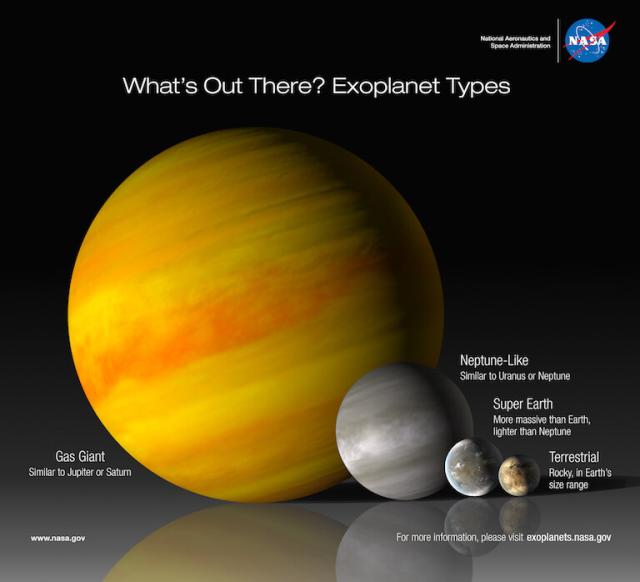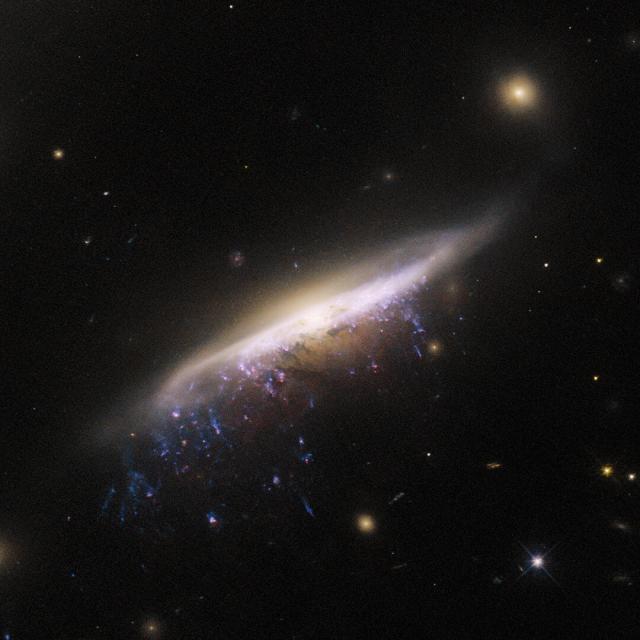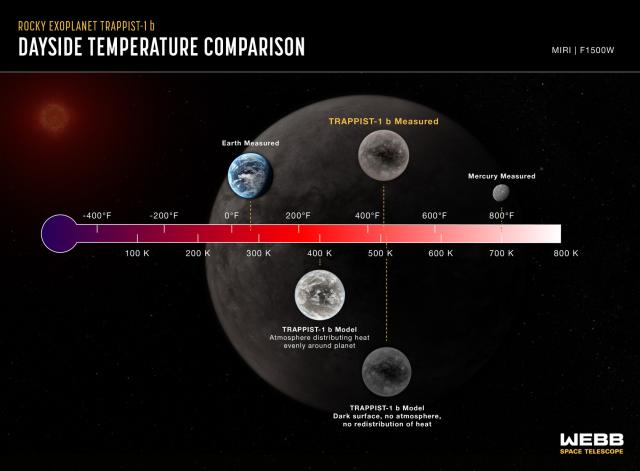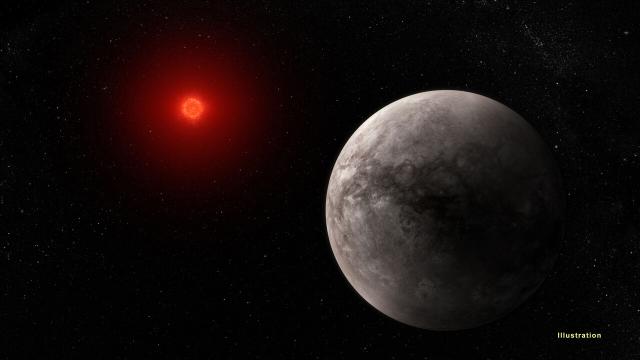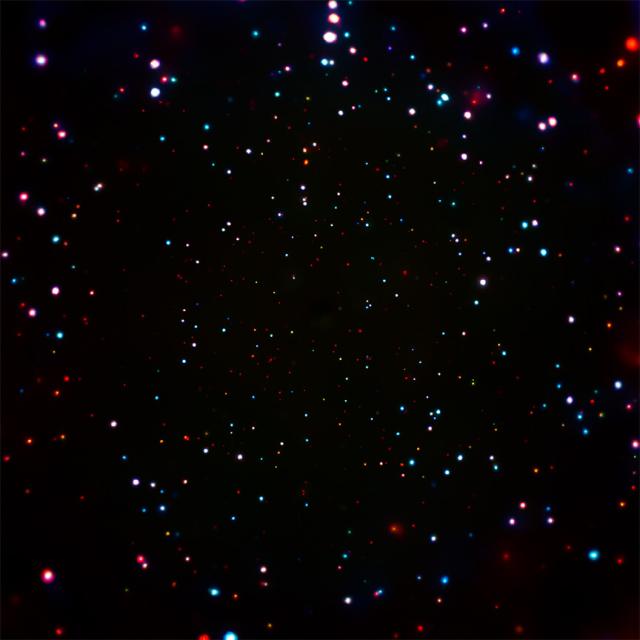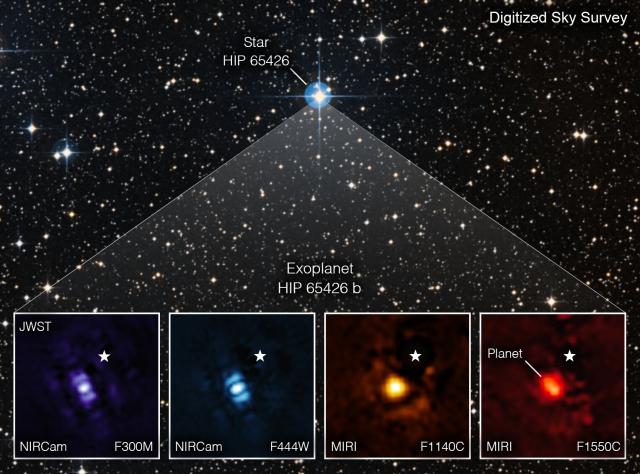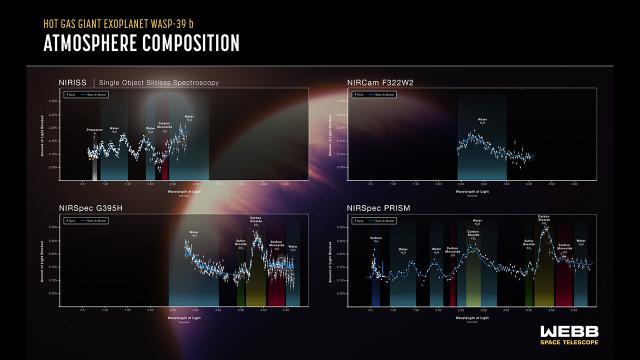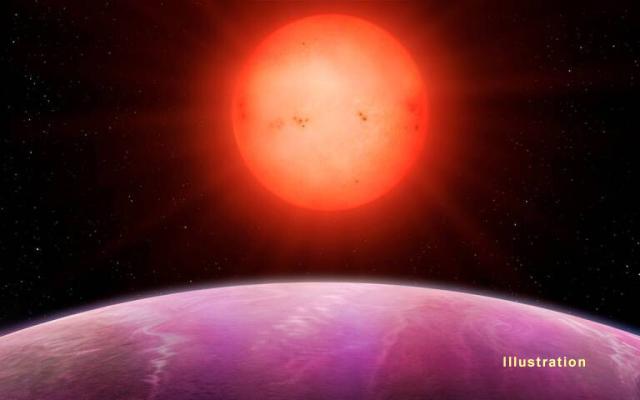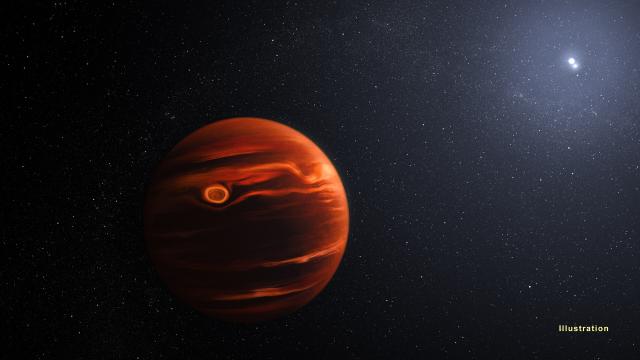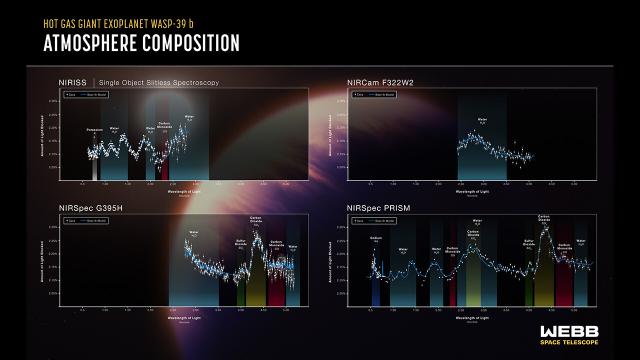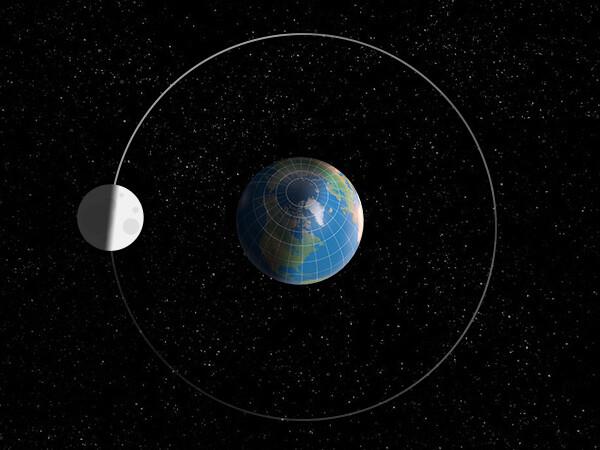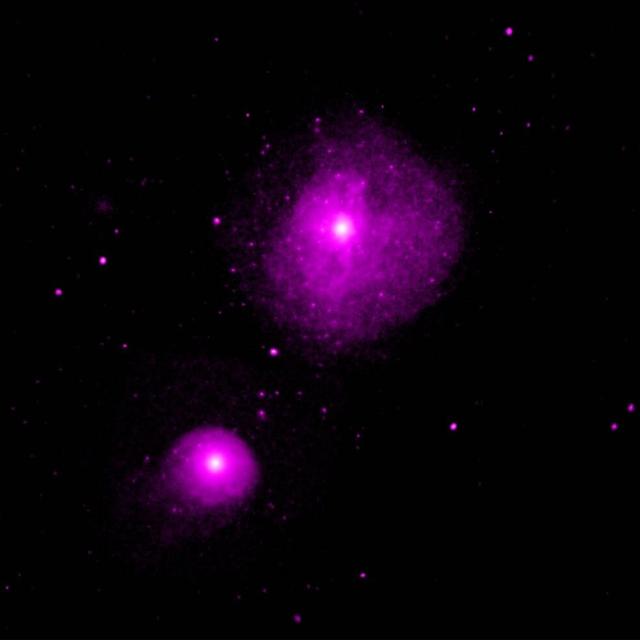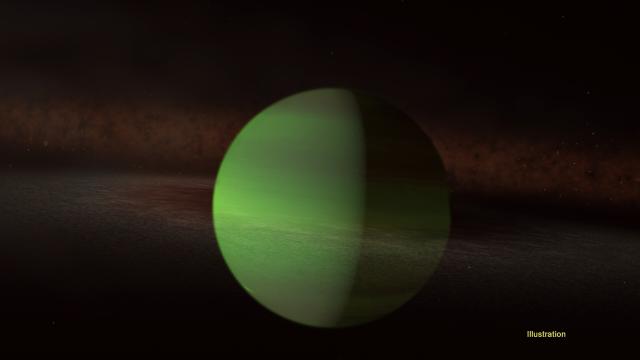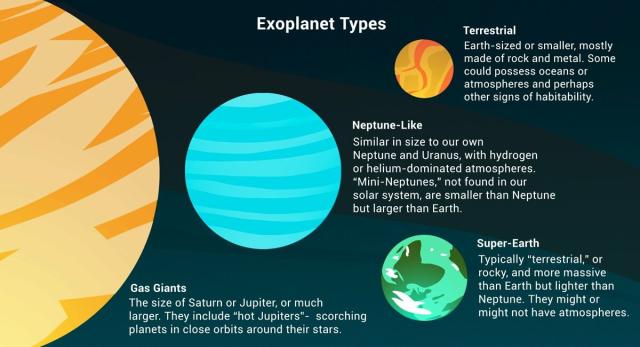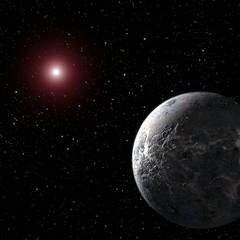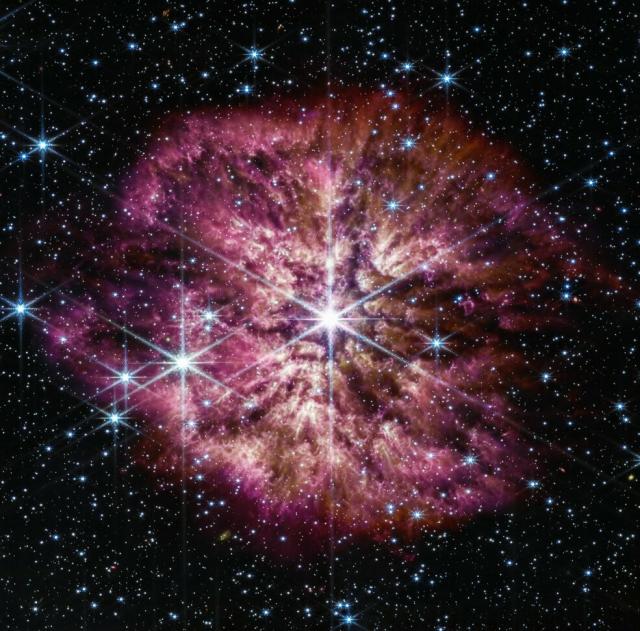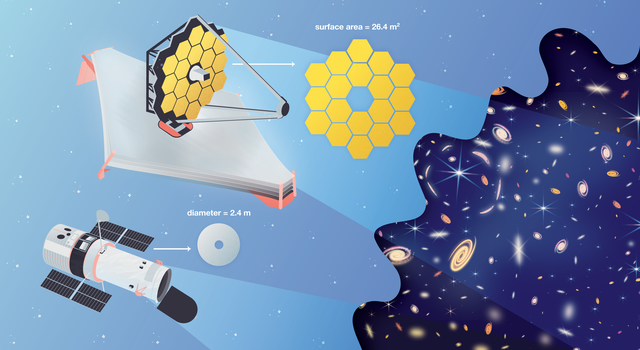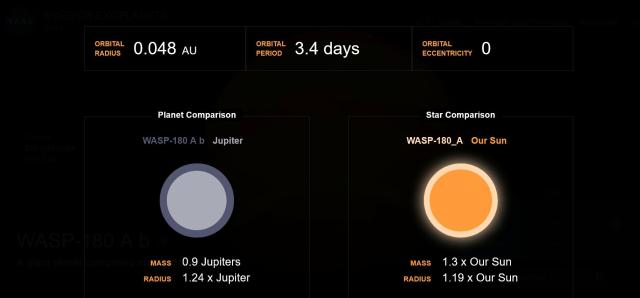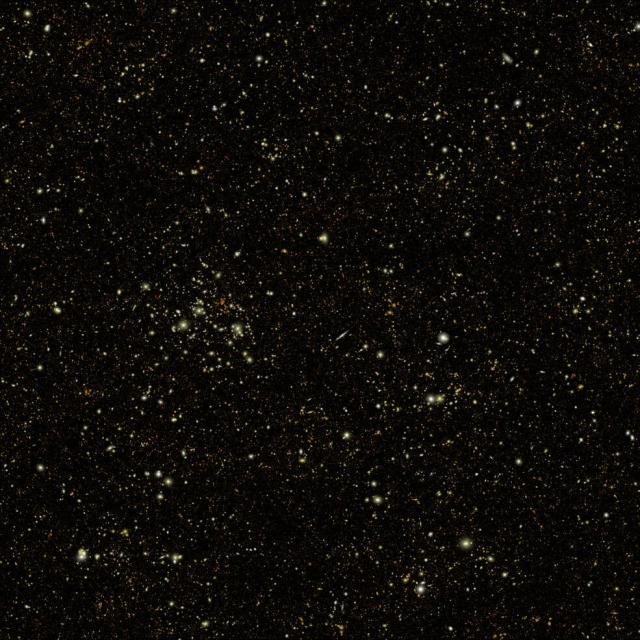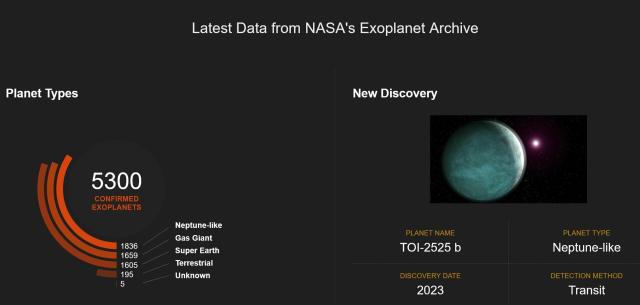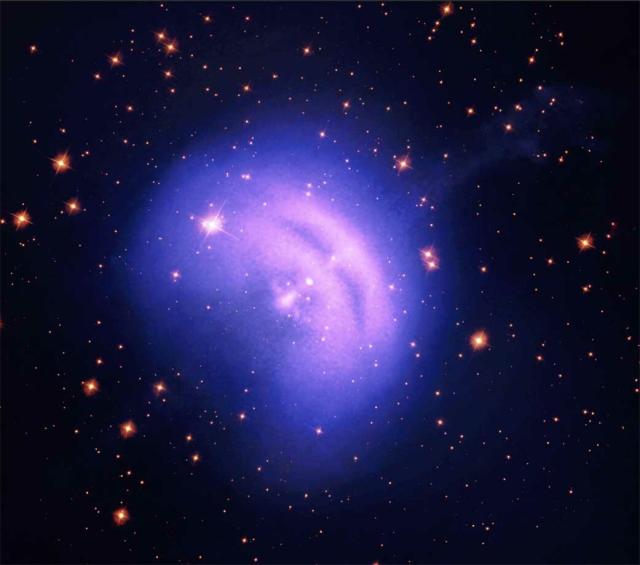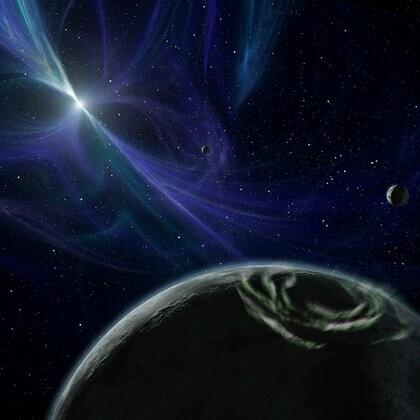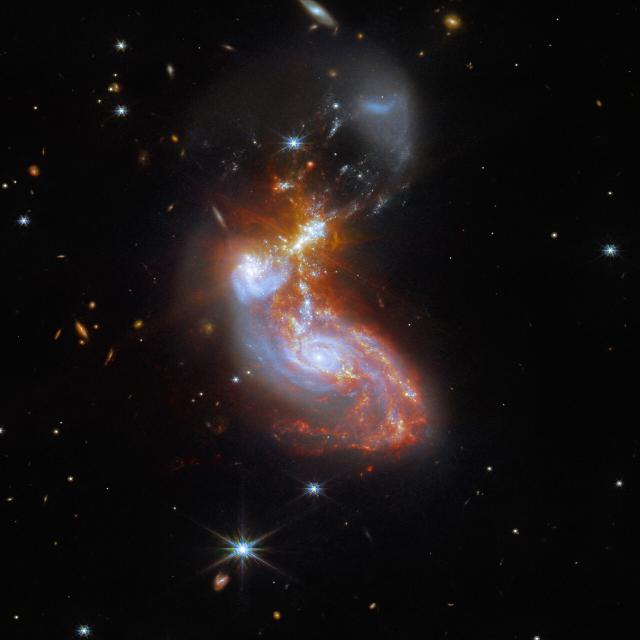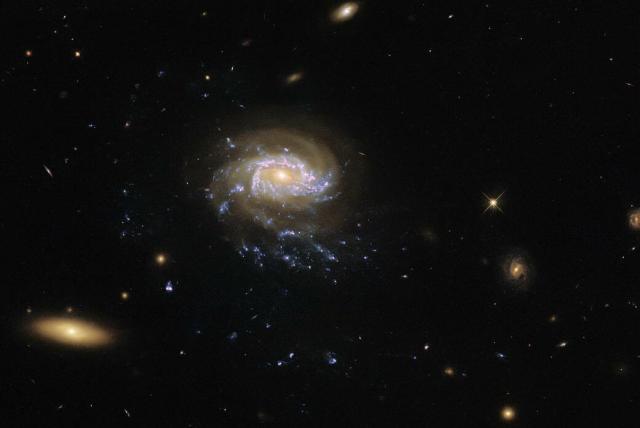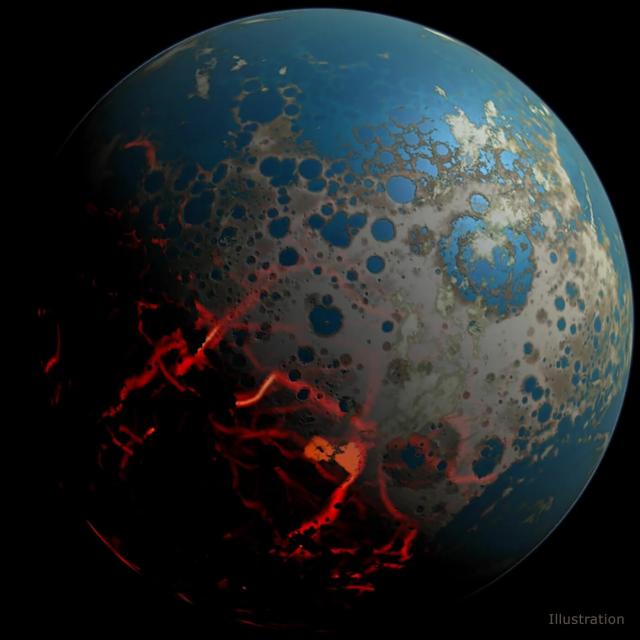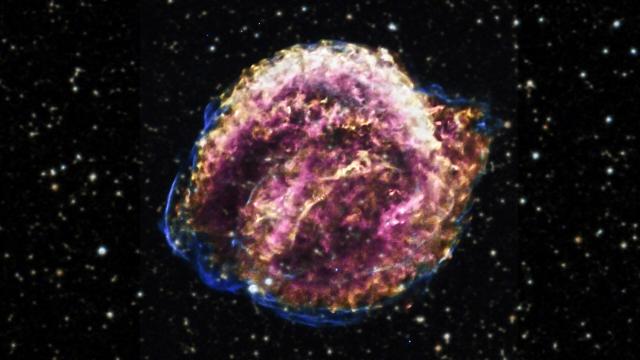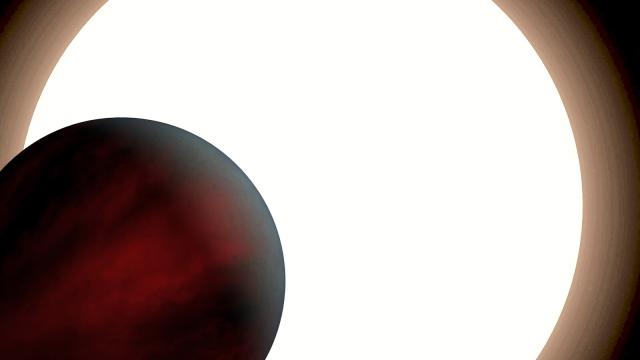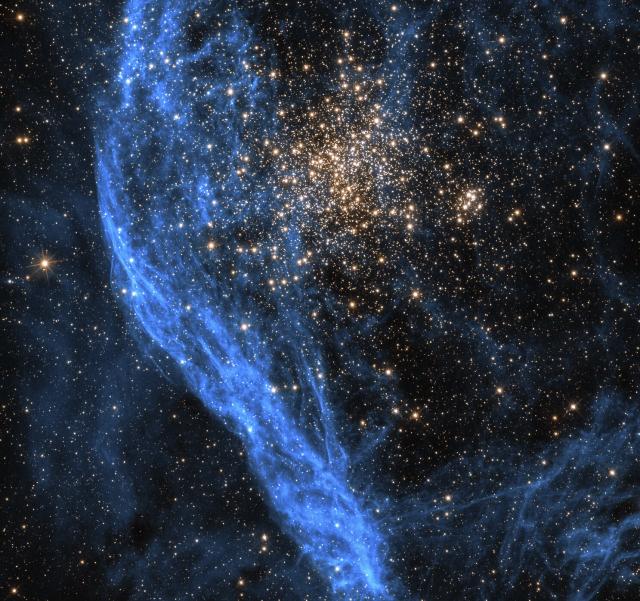Search
Items tagged with: NASAExoplanets
#NASAExoplanets
Overview | Planet Types – Exoplanet Exploration: Planets Beyond our Solar System
So far scientists have categorized exoplanets into the following types: Gas giant, Neptunian, super-Earth and terrestrial, but there is complexity within these groups.Exoplanet Exploration: Planets Beyond our Solar System
#NASAExoplanets
#NASAExoplanets
Hubble Snaps a Galactic Jellyfish
Streams of star-forming gas dripping from the disk of galaxy JW100 are formed by a process called ram pressure stripping.Andrea Gianopoulos (NASA)
#NASAExoplanets
Webb Measures the Temperature of a TRAPPIST-1 Exoplanet
An international team of researchers has used NASA’s James Webb Space Telescope to measure the temperature of the rocky exoplanet TRAPPIST-1 b.Exoplanet Exploration: Planets Beyond our Solar System
#NASAExoplanets
Webb Measures the Temperature of a TRAPPIST-1 Exoplanet
An international team of researchers has used NASA’s James Webb Space Telescope to measure the temperature of the rocky exoplanet TRAPPIST-1 b.Exoplanet Exploration: Planets Beyond our Solar System
#NASAExoplanets
Webb Measures the Temperature of a TRAPPIST-1 Exoplanet
An international team of researchers has used NASA’s James Webb Space Telescope to measure the temperature of the rocky exoplanet TRAPPIST-1 b.Exoplanet Exploration: Planets Beyond our Solar System
#NASAExoplanets
#NASAExoplanets
@NASAWebb uses masks to dim the bright light of stars to reveal much smaller planets. Seeing these faraway worlds in infrared can tell us even more! Super indeed. go.nasa.gov/42Cdjew
#NASAExoplanets
Sirius A, the brightest star in our night sky, revolves with its faint, tiny stellar companion Sirius B. Both are in the Canis Major (Big Dog) constellation. Sirius B may look tiny, but it's also massive, the remains of an exploded star. #NationalPuppyDay
#NASAExoplanets
#NASAExoplanets
New data from @nasa's TESS space telescope is changing our understanding about how -- and where -- giant planets form. ucl.ac.uk/news/2023/mar/small-…
#NASAExoplanets
Small stars may host bigger planets than previously thought
Stars with less than half the mass of our Sun are able to host giant Jupiter-style planets, in conflict with the most widely accepted theory of how such planets form, according to a new study led by UCL and University of Warwick researchers.UCL News
#NASAExoplanets
NASA’s Webb Spots Swirling, Gritty Clouds on Remote Planet
Researchers observing with NASA’s James Webb Space Telescope have pinpointed silicate cloud features in a distant planet’s atmosphere.Isabelle Yan (NASA)
#NASAExoplanets
#NASAExoplanets
Exoplanet Exploration: Planets Beyond our Solar System
NASA’s Exoplanet Exploration Program, the search for planets and life beyond our solar system.Exoplanet Exploration: Planets Beyond our Solar System
#NASAExoplanets
#NASAExoplanets
One collapsed with such force that it was ejected from its galaxy, dragging its binary star companion out with it.
#MondayMotivation: It's all about the journey.
go.nasa.gov/2HI43y9
#NASAExoplanets
Chandra Finds Stellar Duos Banished from Galaxies
Scientists have found evidence that pairs of stars have been kicked out of their host galaxies. This discovery, made using data from NASA’s Chandra X-ray Observatory, is one of the clearest examples of stellar pairs being expelled from their galactic…Lee Mohon (NASA)
#NASAExoplanets
NASA's TESS, Spitzer Missions Discover a World Orbiting a Unique Young Star
The newly discovered planet is orbiting a star still encircled by the disk of material from which both objects formed, giving scientists a glimpse at early planet evolution.Exoplanet Exploration: Planets Beyond our Solar System
#NASAExoplanets
Exoplanet Exploration: Planets Beyond our Solar System
NASA’s Exoplanet Exploration Program, the search for planets and life beyond our solar system.Exoplanet Exploration: Planets Beyond our Solar System
#NASAExoplanets
Our solar system isn't the only one with volcanoes! There's evidence of volcanism on 55 Cancri e, a planet 40 light-years away. Volcanoes there would likely be short and covered by lava due to the super-Earth's high gravity! 360° visualization: go.nasa.gov/406jrdz
#NASAExoplanets
Explore The Surface - 55 Cancri e | Exoplanet Travel Bureau – Exoplanet Exploration: Planets Beyond our Solar System
NASA’s Exoplanet Exploration Program, the search for planets and life beyond our solar system.Exoplanet Exploration: Planets Beyond our Solar System
@NASAWebb catches the rare sight of a Wolf-Rayet star – among the most luminous and most briefly detectable stars known. The star, 15,000 light-years away in the constellation Sagittarius, is destined to explode. go.nasa.gov/3YL5D6I
#NASAExoplanets
NASA’s Webb Telescope Captures Rarely Seen Prelude to Supernova
The rare sight of a Wolf-Rayet star – among the most luminous, most massive, and most briefly detectable stars known – was one of the first observations made by NASA’s James Webb Space Telescope in June 2022.Jamie Adkins (NASA)
We use pi at @nasa every day. How? Read on! There will, of course, be math. jpl.nasa.gov/edu/nasapidaychal…
#NASAExoplanets
Student Project: The NASA Pi Day Challenge | NASA/JPL Edu
Can you use π (pi) to solve these stellar math problems faced by NASA scientists and engineers?NASA/JPL Edu
#MondayMotivation: Why wait? Get it.
go.nasa.gov/2nRiRDd
#NASAExoplanets
#NASAExoplanets
Millions of Galaxies Emerge in New Simulated Images From NASA's Roman
Scientists have created a gargantuan synthetic survey that shows what we can expect from the Nancy Grace Roman Space Telescope’s future observations.Ashley Balzer (NASA)
That's how many planets we've confirmed beyond our solar system -- so far! One of the newly-discovered worlds is more than 1,000 light-years from Earth. TOI 2525 b, a ''warm Neptune,'' orbits its star with a larger companion planet. exoplanets.nasa.gov/discovery/
#NASAExoplanets
Discoveries Dashboard | Discovery – Exoplanet Exploration: Planets Beyond our Solar System
See the latest real-time data dashboard from NASA on exoplanet discoveries, planet types, and more.Exoplanet Exploration: Planets Beyond our Solar System
Journey into the quantum realm with Ant-Man's Paul Rudd! Learn how @NASASpaceSci’s quantum science could help unlock insight into the universe’s biggest mysteries, while contributing to technologies that improve our lives on Earth.
#NASAExoplanets
The explosion of a giant star left behind a pulsar. Winds travel near the speed of light into a chaotic collision as charged particles and magnetic fields crash into surrounding gas, creating this pulsar wind nebula. go.nasa.gov/3ZuIRB2
#NASAExoplanets
Vela Pulsar Wind Nebula Takes Flight in New Image From NASA’s IXPE
About 10,000 years ago, a giant star exploded in the constellation Vela, leaving behind a dense object called a pulsar that appears to brighten regularly as it spins, like a cosmic lighthouse.Beth Ridgeway (NASA)
#NASAExoplanets
Extreme Planets - Exoplanet Exploration: Planets Beyond our Solar System
This artist's concept depicts a planetary system discovered by Aleksander Wolszczan in 1992 around a pulsar.Exoplanet Exploration: Planets Beyond our Solar System
#NASAExoplanets
Kepler Space Telescope Poster - Exoplanet Exploration: Planets Beyond our Solar System
Kepler was NASA’s first exoplanet hunting space telescope. It ushered in a golden age of exoplanet discovery, with more than 2,600 worlds to its credit. We’re still making discoveries in Kepler’s data.Exoplanet Exploration: Planets Beyond our Solar System
500 million light-years from Earth, merging galaxies have a chaotic, disturbed shape in this Webb image. The bright cores of the two galaxies are connected by tendrils of star formation. Eventually they will be one. esawebb.org/images/potm2211a/
#NASAExoplanets
Do you see the tendrils hanging from this ''jellyfish'' galaxy? As jellyfish galaxies move through intergalactic space, gas is slowly stripped away, forming trails that resemble tendrils illuminated by star formation. go.nasa.gov/3ykqRxr
#NASAExoplanets
Hubble Peers at a Galactic Seascape
A “jellyfish galaxy” with trailing tentacles of stars hangs in inky blackness in this image from the NASA/ESA Hubble Space Telescope.Andrea Gianopoulos (NASA)
#MondayMotivation: Look around; you're already on the way!
#NASAExoplanets
What is a light-year? – Exoplanet Exploration: Planets Beyond our Solar System
Light-year is a celestial yardstick, the distance light travels in one year. Light travels at 186,000 miles (300,000 kilometers) per second, 5.88 trillion miles (9.46 trillion kilometers) per hour.Exoplanet Exploration: Planets Beyond our Solar System
#NASAExoplanets
Removing Traces of Life in Lab Helps NASA Scientists Study Its Origins
A specialized laboratory setup at JPL removes the chemical influence of modern organisms so scientists can study the chemistry that may have led to life’s emergence.NASA Jet Propulsion Laboratory (JPL)
#NASAExoplanets
Debris from Stellar Explosion Not Slowed After 400 Years
Astronomers have used NASA's Chandra X-ray Observatory to record material blasting away from the site of an exploded star at speeds faster than 20 million miles per hour.Lee Mohon (NASA)
#NASAExoplanets
#NASAExoplanets
Discovery Alert: For This Familiar Planet, a Death Spiral
A previously discovered "hot Jupiter" appears to be spiraling into its star, new data shows.Exoplanet Exploration: Planets Beyond our Solar System
22 exoplanets join the known worlds, bringing the confirmed total to 5,272. All 22 were discovered using microlensing, where light from a distant star is bent and focused by gravity as a planet passes between the star and Earth. go.nasa.gov/3kAwOmD
#NASAExoplanets
5 Ways to Find a Planet | Explore – Exoplanet Exploration: Planets Beyond our Solar System
NASA’s Exoplanet Exploration Program, the search for planets and life beyond our solar system.Exoplanet Exploration: Planets Beyond our Solar System
#NASAExoplanets
Hubble Captures Dual Views of an Unusual Star Cluster
While these two images may look dazzlingly different, they are actually pictures of the same cosmic object: NGC 1850.Andrea Gianopoulos (NASA)
